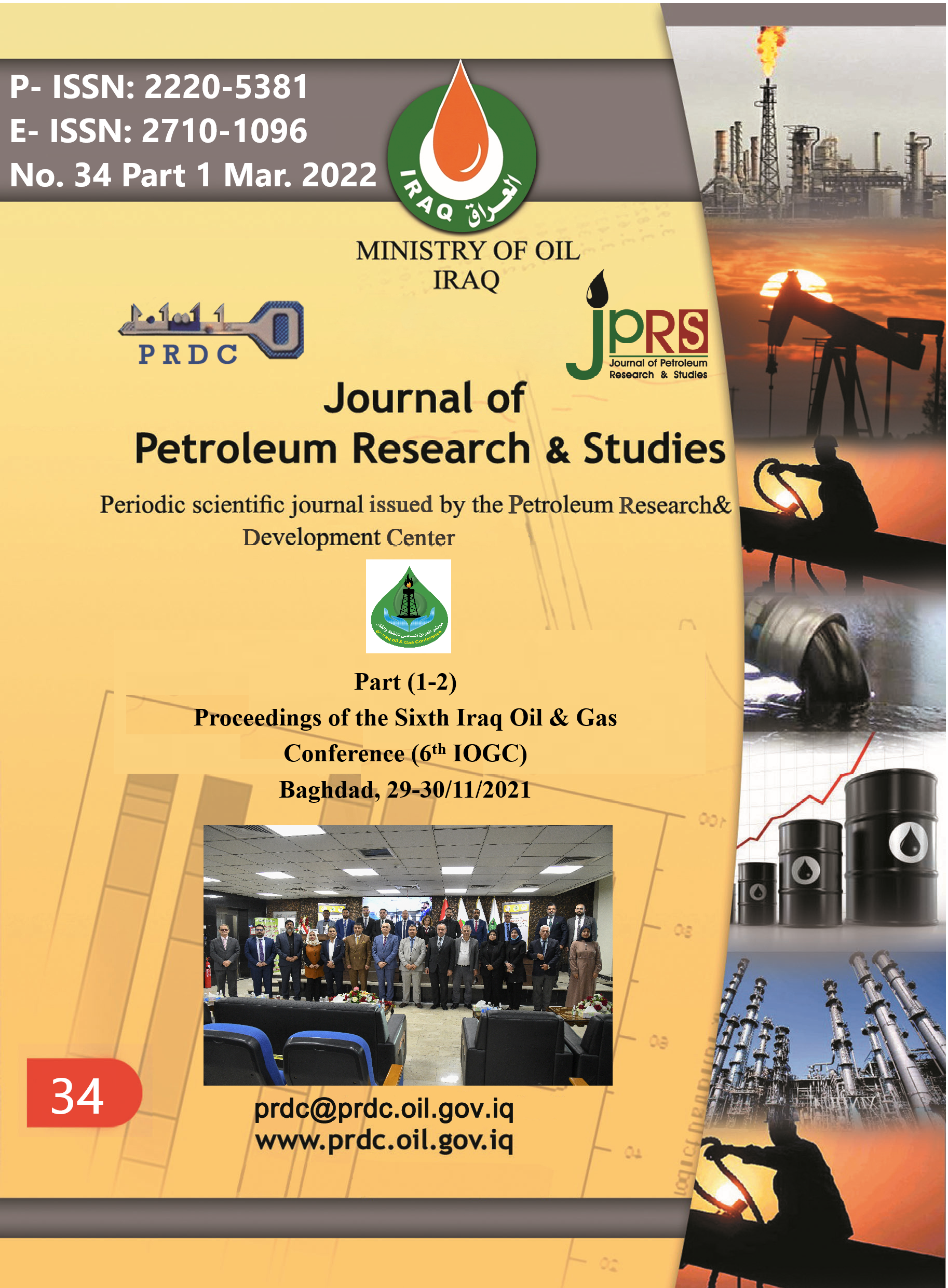A Review of the Geothermal Potential Hot Spots in Iraq Using Geophysics Methods
DOI:
https://doi.org/10.52716/jprs.v12i1.590Keywords:
Geothermal Energy, Hot Spots in Iraq, Renewable Energy, Well Drilling, Hydrothermal.Abstract
This review introduces the concept of geothermal energy and the technologies used to harvest this sustainable and clean source. Geothermal systems were explained in details in the review. They were classified into two major types, steam cycle and binary cycle. The steam cycle is always used at higher enthalpy, and a binary cycle is used at low enthalpy. The power generation methods used to produce geothermal power from geothermal resources, typically, comprises of well production, injection and steam and gas separators, heat exchangers, preheaters, turbines and condenser. The steam cycle type allows the water to evaporate and the steam will be separated from brine solution and expanded in a turbine, generally the salty water will have discarded out of system, or it is flashed again at lower system part. Power generation methods were divided into single Flash Steam Plant, Double Flash Steam Plant, and Dry Steam Plant. The components of the geothermal power plant were elucidated, namely, feed pump, heat exchanger, preheater, evaporator, turbine, and condenser. After surveying the geothermal energy worldwide briefly, the Iraqi geothermal energy was introduced. Thermal gradient in Iraqi tectonic zone was analyzed. There is a very limited available literature on Iraq geothermal. However, we were able to analyze the geothermal temperature gradient in Iraq by dividing it into two regions; the northern Iraq, and the southern Iraq. Our analysis shows that Iraq is a poor zone for geothermal with no significant hot spots all over the country. However, low temperature applications can be invested using the exhausted petroleum wells.
References
References
R. DiPippo, Geothermal power plants: principles, applications and case studies. Elsevier Ltd, 2005.
REN21, “REN21,” Global Status REport, 2019. [Online]. Available: https://www.ren21.net/gsr-2019/pages/summary/summary/.
J. Unwin, “The oldest geothermal plant in the world,” Power Technology, 2019. [Online]. Available: https://www.power-technology.com/features/oldest-geothermal-plant-larderello/.
S. J. ZARROUK and K. MCLEAN, Geothermal Well Test Analysis. 2019.
H. Jassim, “Geothermal Energy and Possibility of Use It in Iraq,” DGK - gtV 2012, no. November, p. 5000, 2012.
A. H. Salloom, O. A. Abdulrazzaq, B. H. Ismail, and A. D. Salman, “Ground Effect on the Performance of Back-to-back Stacked Silicon Solar Panel System: An Imitation for a Bifacial Solar Panel,” Iraqi J. Ind. Res., vol. 6, no. 1, pp. 8–15, 2019.
T. A. Ismaeel, S. Aljabair, O. A. Abdulrazzaq, and Y. A. Abood, “Energy recovery of moving vehicles’ wakes in highways by vertical axis wind turbines,” FME Trans., vol. 48, no. 3, pp. 557–565, 2020.
R. A. Abdula, “Geothermal gradients in Iraqi Kurdistan deduced from bottom hole temperatures,” Egypt. J. Pet., vol. 26, no. 3, pp. 601–608, 2017.
M. I. Sohel, M. Sellier, and S. Krumdieck, “An Adaptive Design Approach for A Geothermal Plant with Changing Resource Characteristics,” Proc. World Renew. Energy Congr. – Sweden, 8–13 May, 2011, Linköping, Sweden, vol. 57, pp. 1241–1248, 2011.
M. Kühn, 2 Concepts, Classification, and Chemistry of Geothermal Systems, First Edit. Berlin: Springer, Berlin, Heidelberg, 2001.
P. Valdimarsson, “Geothermal Power Plants and Main Components,” Short Course Geotherm. Drilling, Resour. Dev. Power Plants, no. Figure 2, p. 24, 2011.
M. Hijriawan et al., “Organic Rankine Cycle (ORC) in geothermal power plants,” J. Phys. Conf. Ser., vol. 1402, no. 4, 2019.
J. Clarke and B. Joshua Geiger Clarke, Optimal design of geothermal power plants Part of the Energy Systems Commons Optimal design of geothermal power plants. 2014.
G. G. Gitobu, “Model Organic Rankine Cycle For Brine at Olkaria Geothermal Field, Kenya,” Geotherm. Train. Program., no. 15, 2016.
P. Colonna et al., “Organic Rankine Cycle Power Systems: From the Concept to Current Technology, Applications, and an Outlook to the Future,” J. Eng. Gas Turbines Power, vol. 137, no. 10, Oct. 2015.
C. J. Bliem, “Kalina Cycle and Similar Cycles for Geothermal Power Production,” Contract, 1988.
C. Niu, J. Zhu, X. Liang, W. Zhang, and W. Fu, “Analysis and optimization of Kalina cycle,” Trans. - Geotherm. Resour. Counc., vol. 37, no. PART 2, pp. 755–759, 2013.
M. Cultrera, “Design of deep geothermal wells,” Acque Sotter. - Ital. J. Groundw., vol. 5, no. 4, 2016.
T. Exploration, “Geothermal gradients and geothermal oil generation in southern Iraq : A preliminary investigation,” J. Pet. Geol., vol. 7, no. 1, pp. 77–85, 1984.
Downloads
Published
How to Cite
Issue
Section
License
Copyright (c) 2022 Alaa H. Salloom, Omar A. Abdulrazzaq, Sahar Sadoon, Wathiq G. Abdulnaby

This work is licensed under a Creative Commons Attribution 4.0 International License.














